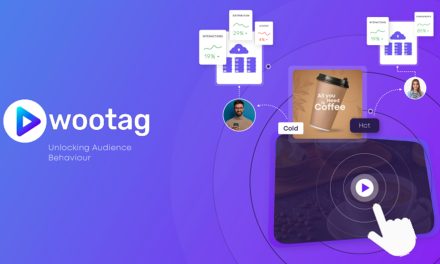Innovative solutions such as Voice AI will be critical in helping marketers make the most of the data that is readily available in their repositories.
Google’s decision to delay the phasing out of its third-party data collection capabilities by two years to 2024 has been a welcome development for marketers globally, albeit in the short term, as they now have more breathing room to rethink their data collection and targeting strategies.
In the long run, the sunsetting of third-party cookies – on the back of criticisms that it has been too intrusive on users’ privacy – should be a welcome development for the industry. This will ultimately help build consumer trust towards the advertising and tech industries.
For the next few years, however, the entire digital marketing ecosystem – comprising a complex web of marketers, ad agencies, and various publishing and media houses will spend a significant portion of their time planning for a world without the valuable behavioural and demographic insights that currently help them create target audiences and segments. Instead, they will have to rely on other sources of data, which as of now, remains limited.
After all, third party data has been a valuable tool for marketers looking to expand their audience beyond their existing pool of customers. In many cases, brands have been able to tap into a wider, global audience through the savvy use of cookies.
Nonetheless, the glass is half full. The industry is at a critical juncture to innovate, and build a system of data collection that is impactful, scalable, and responsible all at the same time.
Ultimately, in the next era of consumer data collection, marketers would need to make the most of the existing customer data they hold, on top of identifying new sources of data. In this regard, voice data represents a potential pot of gold for marketers.
Voice data: A potentially valuable, yet dormant pool of data
Consider this – despite the tremendous progress industries have made in moving all their customer service touchpoints online – through solutions such as chatbots – many businesses ultimately maintain a call-in line for customers to speak to an operator. More often than not, customers dial in to speak to a customer support agent in times of distress or curiosity – when they need an immediate solution to a problem, or are faced with a unique situation that requires the attention of a human agent. This consumer habit has been decades in the making, and has stuck even in this era of online commerce.
While many companies store voice recordings from such calls, these are often only utilised in the process of training new customer service agents. In reality, voice data has much to offer to marketers as it does to the customer service function.
For starters, voice data contains unique insights into consumers’ decision-making process, including their product preferences. For instance, a department store chain might regularly receive calls regarding the availability of certain products, which would give markers valuable data around popular products to promote to a wider audience. Call logs thus become a representative sample for the preferences, wants and needs of a wider audience.
How marketers can unlock the potential of existing data
To unlock the true value of voice data, the key challenge for marketers lies in organising the swathes of voice data into the right channels – especially given that voice data is inherently fragmented and unstructured, which requires layers of processing.
Automatic Speech Recognition (ASR) is one of the main ways marketers can process voice data, by converting spoken words into machine-readable text. In the process, machines analyse the text by breaking down sentences and speech and applying lexical parsing to develop their “understanding” of the conversation.
However, there will be instances where ASR fails to understand the spoken language or accent. In this instance, more complex solutions such as Voice AI is needed to disambiguate the language’s syntax or semantics by examining the context of certain keywords. Ultimately, Voice AI gets better with time. As more data gets processed, the Voice AI will be able to respond more accurately instead of relying on assumptions and weak correlations.
But the value of Voice AI goes beyond transcribing and organising data. Voice AI can also analyse customer intent and sentiment, allowing marketers to collect data even when it’s not verbally mentioned by the customers themselves.
At a critical juncture for digital marketing, innovation will be key
According to Mckinsey research, the publishing industry will have to replace up to $10 billion in ad revenue from third-party data, with first party and probabilistic data. At the same time, Digiday+ Research found that there isn’t a clear consensus among agency and brand professionals on the way forward in the post third-party cookie world.
While time is on the side of marketers, there is a unique opportunity in the next few years for them to set the foundation for sustained growth in the next decade – in a way that is ethical and respectful of customers’ data, while allowing them to target customers in an effective and precise manner. In this world, innovative solutions such as Voice AI will be critical in helping them make the most of the data that is readily available in their repositories.


















